El Calafate

By Jaimy de Vries
El Calafate is the portal to the Argentina Patagonia and starting off point to go to the Los Glaciares National Park. After El Chalten I stayed in El Calafate for a week, where the main attraction was the Perito Moreno Glacier. A week was more than enough – you can visit El Calafate in 3-4 days and see everything.
If you want to go to the Argentina Patagonia you can’t skip visiting El Calafate, that’s because this is the portal and starting point to see the Los Glaciares National Park. Most of the people arrive by plane, but you can also reach El Calafate by bus. When I arrived by plane I took a 2 hour bus drive to El Chaltén. Beginning of March I arrived in El Calafate, but didn’t stayed long. I took a bus straight to El Chaltén 1,5 week later I came back to El Calafate.
The contrast of Patagonia
I was amazed by the big contrast Patagonia has to offer. The contrast of Patagonia you can already see when you’re flying over the Andes. When I was flying from Ushuaia to El Calafate I only saw Steppe, almost as dry as a dessert. “Is this Patagonia? Where are the mountains?” Was I thinking. It turned out that the people in the plane who were looking at the west side saw all the mountains of the Andes I had a seat on the east side looking over the steppe.
In the Andes mountains it cloudy most of the time, it rains or snows almost every day. I heard that 90% of the moisture is in the mountains. So the steppe is missing out, because there is no much rain in the east. The winds can be very strong in the steppe and that’s why you see lots of low plants. They’re low and have a lot of roots to protect themselves from the wind and the roots catch as much as water as possible. All the wind comes from the mountains, from the west to the east side. Sometimes you see a tree, mostly close to towns or houses. They give protection from the wind, but it’s hard for tree’s to grow in this area. There are no natural tree’s in the steppe. If you see them, they’re are planted by people and are nurtured by them.
Not only the fauna, but also the animals adjusted to this Climate. Like the guanaco that lives in the dessert, the Condors and Carancho. In the forest you have the Huemel and woodpeckers (the one like woody woodpecker). The puma and foxes live here too, but they’re difficult to see. They’re mostly active at night. In the lake you have flamingos and birds. It amazed me that you have flamingo’s living in a glacier lake. “Isn’t that too cold for tropical birds?” was I thinking. It turns out the water in the bay where you can find them is hallow and warmed up by the sun, then the flamingo’s come. In the winter they leave, by then the water gets frozen and all the locals here go ice skating up there. They love watersports, but the lake is very cold, not good for swimming. But there are lots of watersports like kayaking, wind and kite surfing.
# 1 - Perito moreno tour
Number one on the list of everybody that’s visiting El Calafate is to see the Perito Moreno Glacier. You can visit the balcony stairs yourself by car or bus, book a boat trip or a full day tour. Back home I heard that the tours to the glacier are fully booked quickly. It’s difficult to book a tour last minute. You need to book it at least two weeks in advance. So we did this and paid in dollars online. I recommend to try to pay it with cash – much cheaper because of the currency. Check blog post: Blue dollar.
I looked for a tour to walk on the glacier as long as possible. I found a mini-trekking tour where you can walk over a glacier for 1,5 hours. After I booked it I heard from an Argentinean friend that you have another tour that offers an adventurous walk over the glacier called: big ice trekking. So it depends on what you like. Do you want a relaxing tour but with lots of tourist, then go for the mini-trekking. Do you want an adventurous trek on a glacier then go for big ice tour. But this is more an intermediate level hike. So make sure where you’re up signing in for.
The day of the tour I was picked up by a small bus and then we were put into a bigger bus, a big tour bus. This is where you can see that this tour is more for people who are on a vacation than backpackers. Everything went a bit slower and there were so many stops to take pictures. Also the people were a little bit older. While making these stops we saw everybody going outside with selfie-sticks. I don’t really like these massive tourist attractions. So if you hate places with lots of tourists, don’t book a tour like this.
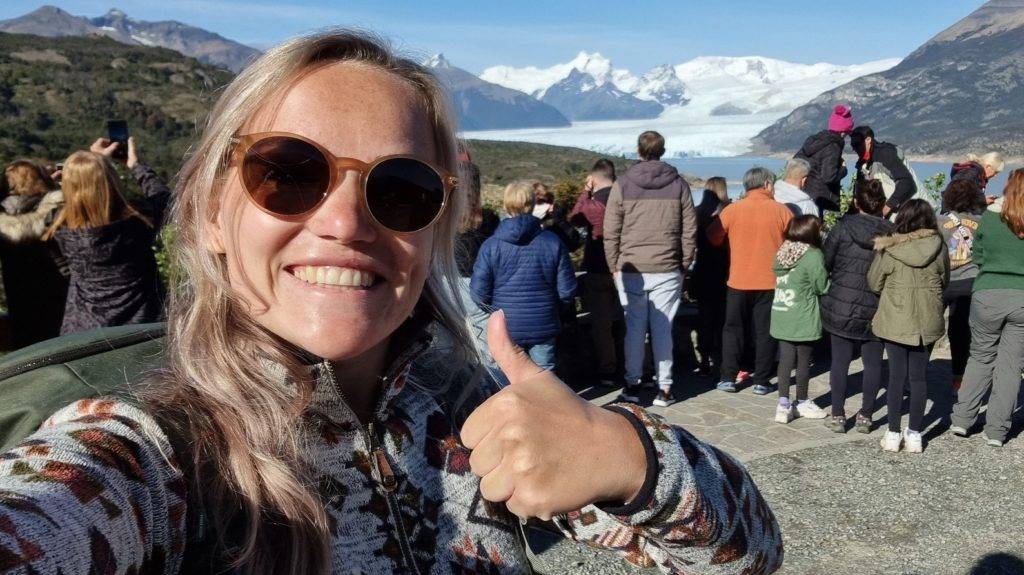
Sarcastic thumbs up!
We were lucky that day, we had very nice weather. It was dry, warm and the sun was shining bright. Most of the times its raining and windy up there. There are not many glaciers on the world. You have them in Antarctica, Alaska, Greenland, Iceland, but most of them are not easy accessible. The special thing about the Perito Moreno Glacier is that it’s big and accessible, even for people who are disabled. Perito Moreno Glacier is 40 km long, 5 km wide and is 257 km2. Perito Moreno is part of the third largest ice field of the world or Argentina. (the Southern Patagonia icefield)
We first arrived at the balcony’s that looks over the Perito Moreno glacier. This glacier is huge! Understandable they build a whole balcony park, it’s that big! There were several hiking trails on the balcony’s. With my friends we decided to take the quiet, less touristy trail, to avoid the crowd. While we were walking we heard so many calving sounds. This is the sounds you hear when a part of the glacier breaks. It’s so loud! But when you hear it and take a look over the glacier, the moment is already gone. Sounds doesn’t travel that fast.
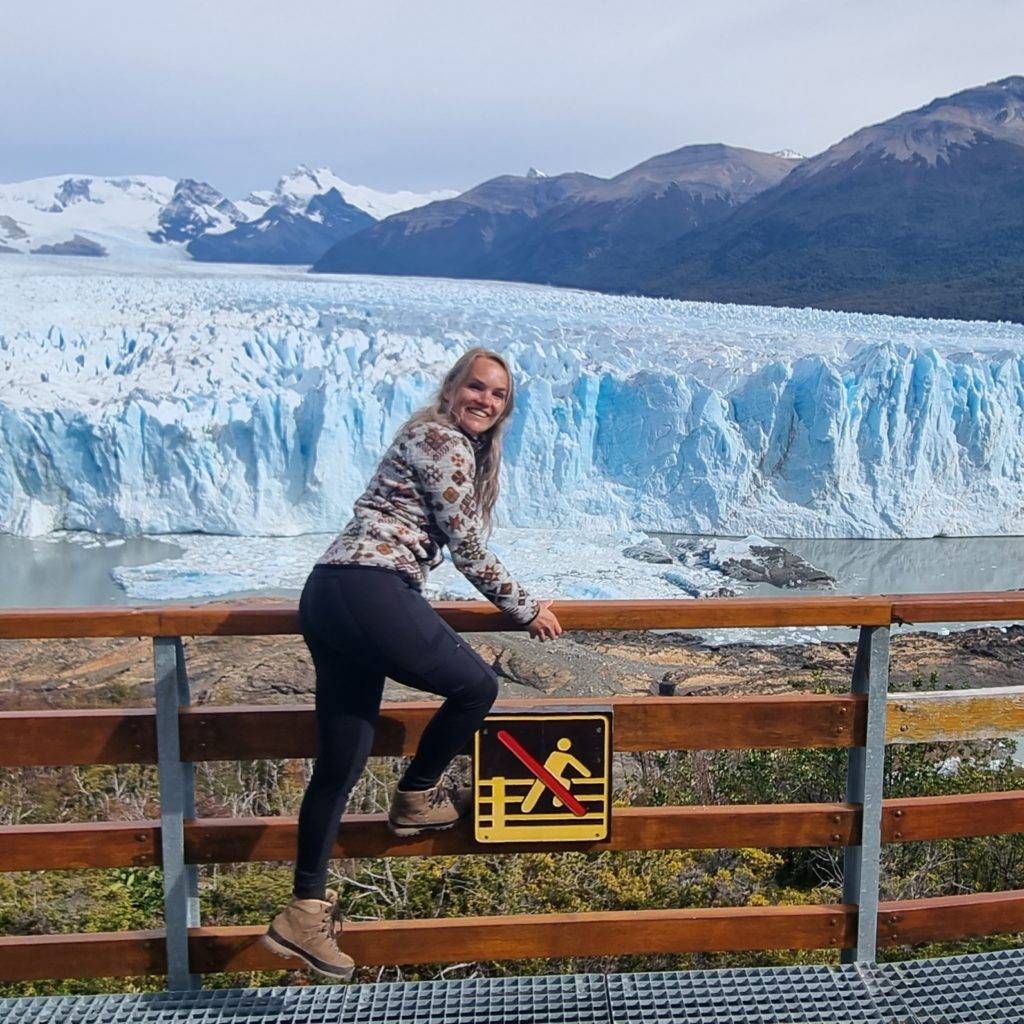
Don’t climb over the balcony

A view over the perito moreno glacier
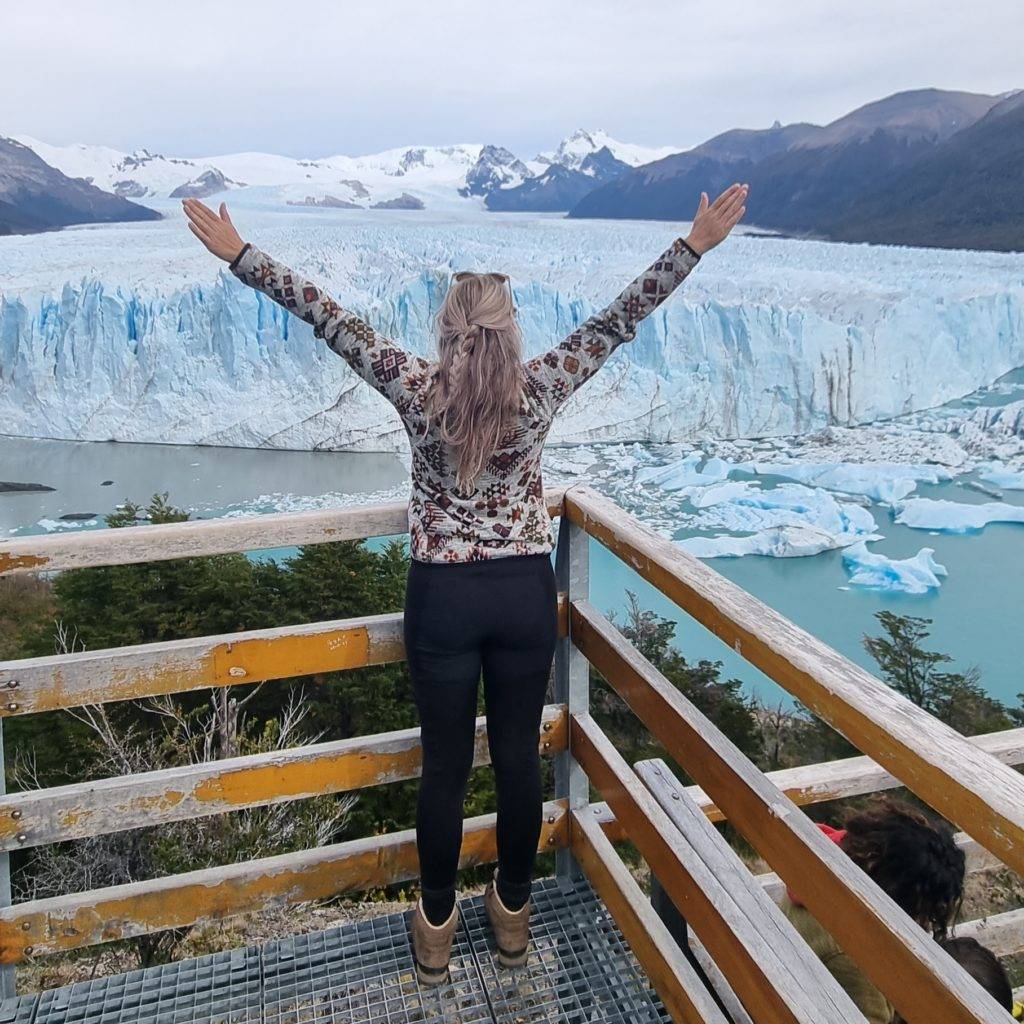
Of course a picture of me with the view
The flowing/movement of the glacier is so powerful, that it takes rock, sand and mineral with it. That’s why sometimes the ice of the glacier is black or contains dirt. They call this black ice moraines. Every lake filled with glacier water looks milky, not crystal clear. That’s because of all the minerals the glaciers flows into the lake. You can drink water close to the glaciers, but a lake with too much minerals is not so good, so the Argentinean people first process it before you can drink it.
After the balcony’s we took the ferry boat up to the glacier. From there a short walk to a station where we got a helmet and our crampons. We needed to walk like penguins and stamp hard for more grip…well this is a skill I practiced a lot when I was a toddler with all my tantrums. So I was really good at it. It felt like second nature.
I asked if global warming is effecting the glacier. And they said it does. Around 100 years ago the glacier was at least more than hundred meters bigger than it is now. But this year it was quite stable. A glacier moves and ice ruptures of, but on the top there is new glacier-ice developing. It was an amazing experience to walk on a glacier, the view is just stunning. Spikey tops, deep crevasses, and lots of crystal blue colors. I’m feeling blessed to witness glaciers, maybe over a hundred years they’re gone.
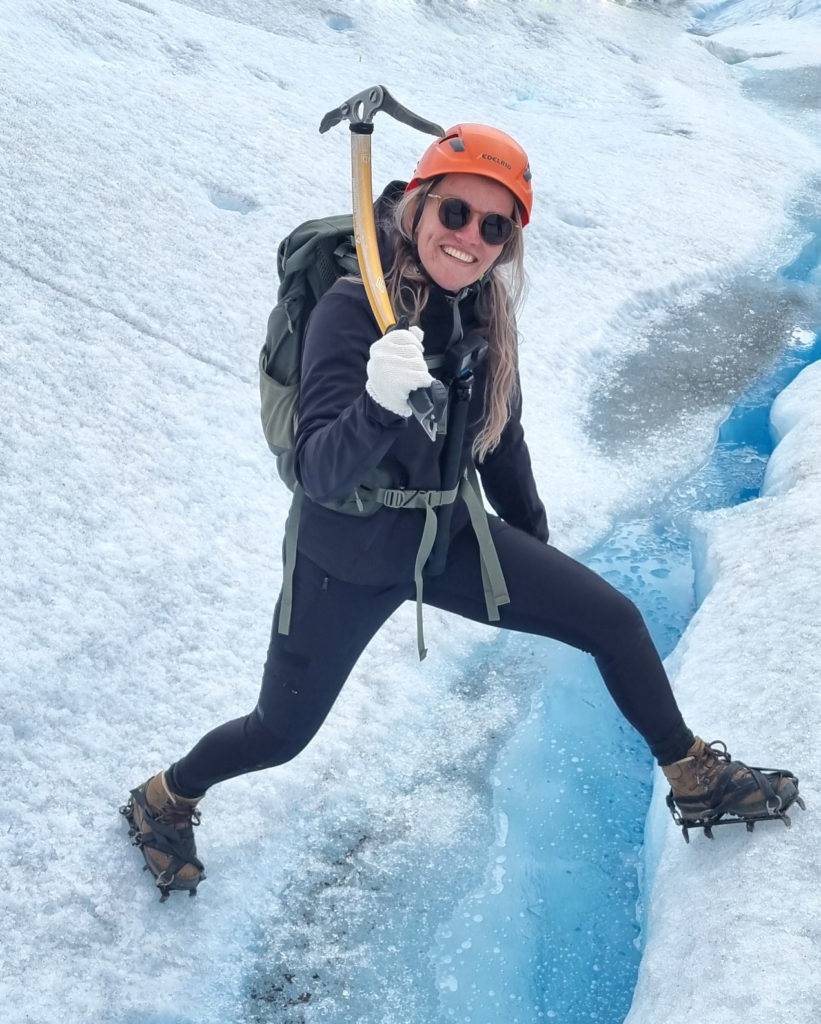
The hook was not necessary, just for fun
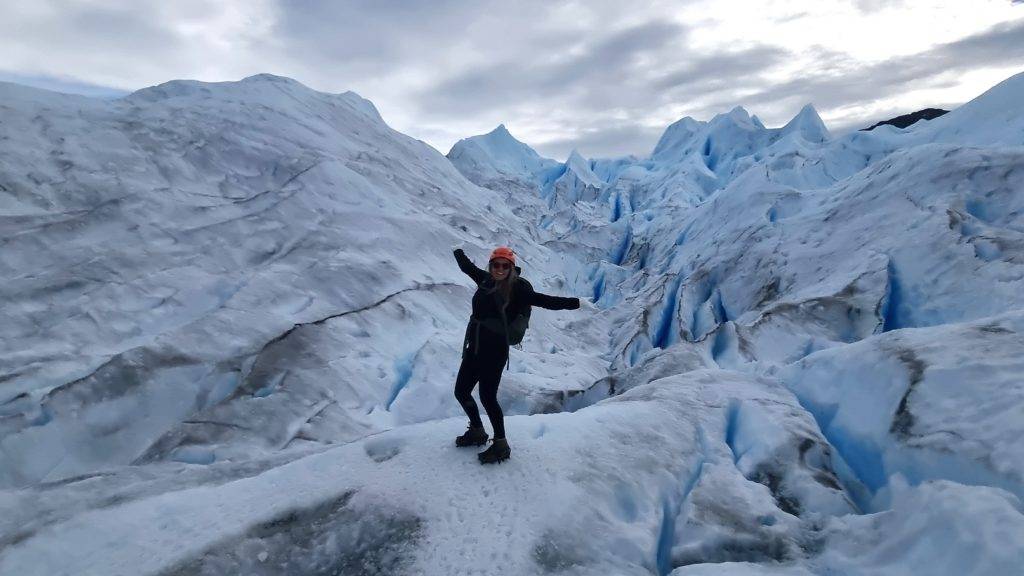
Look at this!!
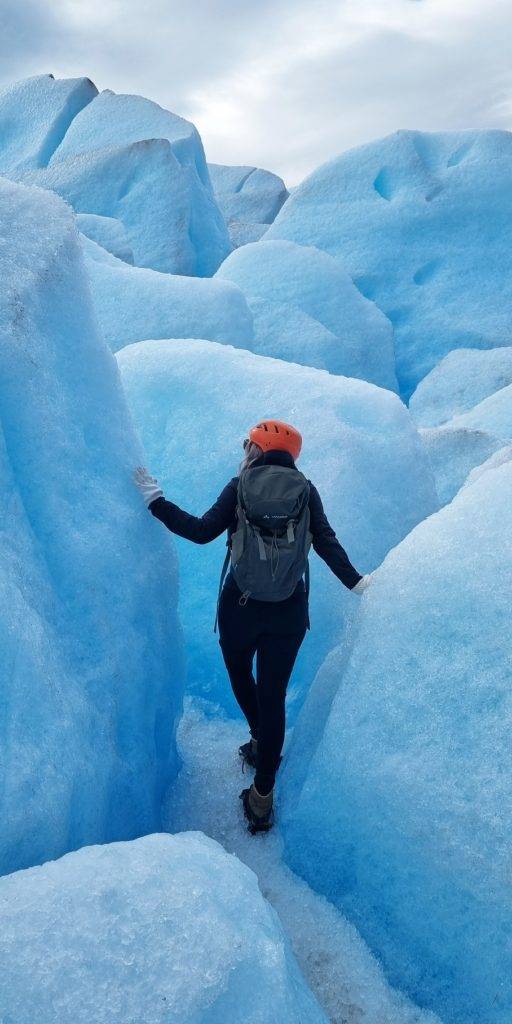
I’m blue da ba die da…..
# 2 - Walichu caves
At Walichu, 8 km away from the city, you can visit the Walichu caves. I rented a MTB bike to reach this place. The Walichi caves is where native Indians lived. They lived farther away from the glacier to the warmer east side, the steppe. The caves where former river beds that are more than 18 million years old. The natives were spiritual people that made lots of drawing on the wall with ceremonial purposes. It has a meaning we still don’t know. But these drawings are quite similar to the natives that lived in New Zealand for example. The drawings are quite impressive, that they’re still there to see after so many decades. That’s is because they made a special mixture made with fat in the low bones of guanacos or puma’s they hunted. And that they mixed this with plants and urine. They re-used bones to draw/impregnate the paintings.
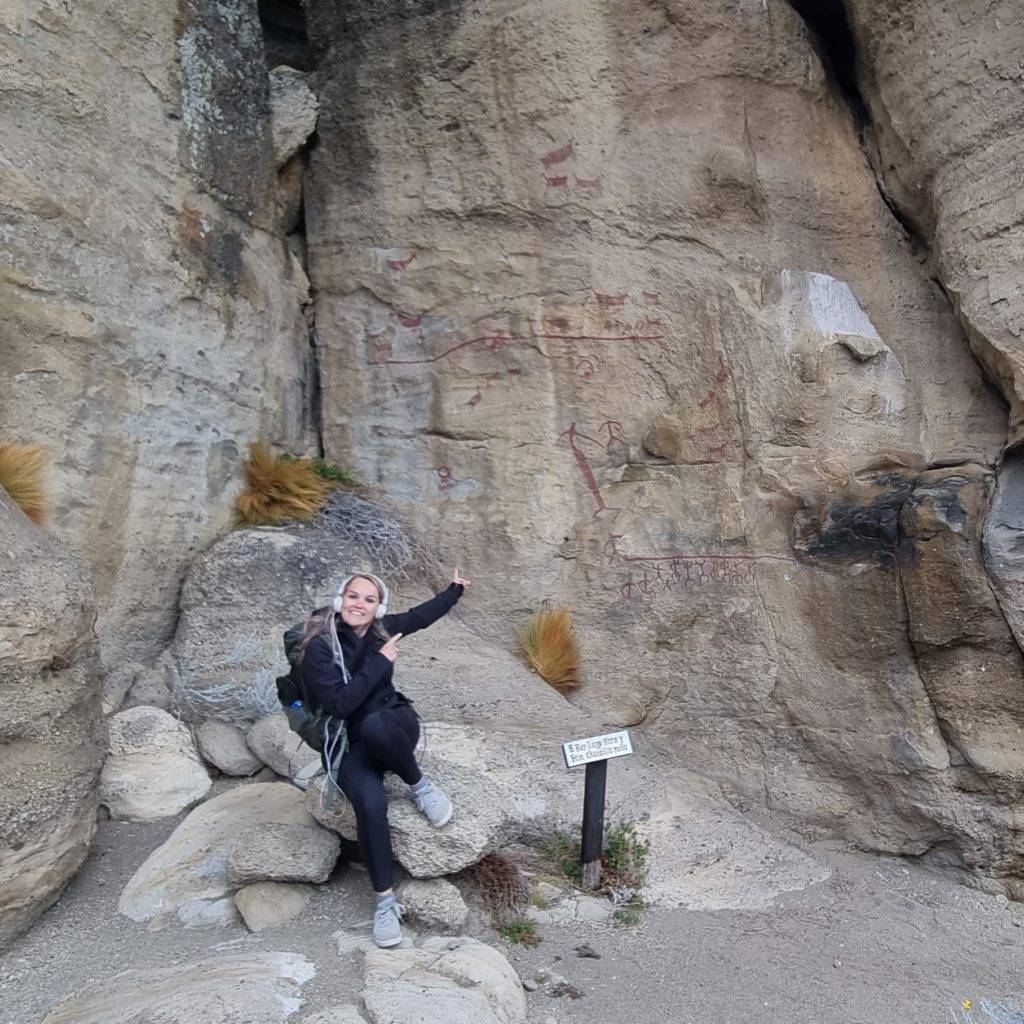
# 3 - Walk around downtown
The main street is on Avenida del Libertador. It’s not big, but you have some clothing, outdoor and lots of tourist shops.Also some nice cafes and restaurants. The best bars are la Fabrica and Zorra to have a good night out. I loved the ice cream bar Titi Helados, I visited them almost daily to get an ice cream for 300 pesos with El Calafate (blue berry) and Chocolate almond ice cream. Hmm, thinking about it makes me really hungry.
You have a small market in de city where they sell handmade stuff, its called Paseo de Artesanos, and a recommendation to visit if you take a stroll downtown.
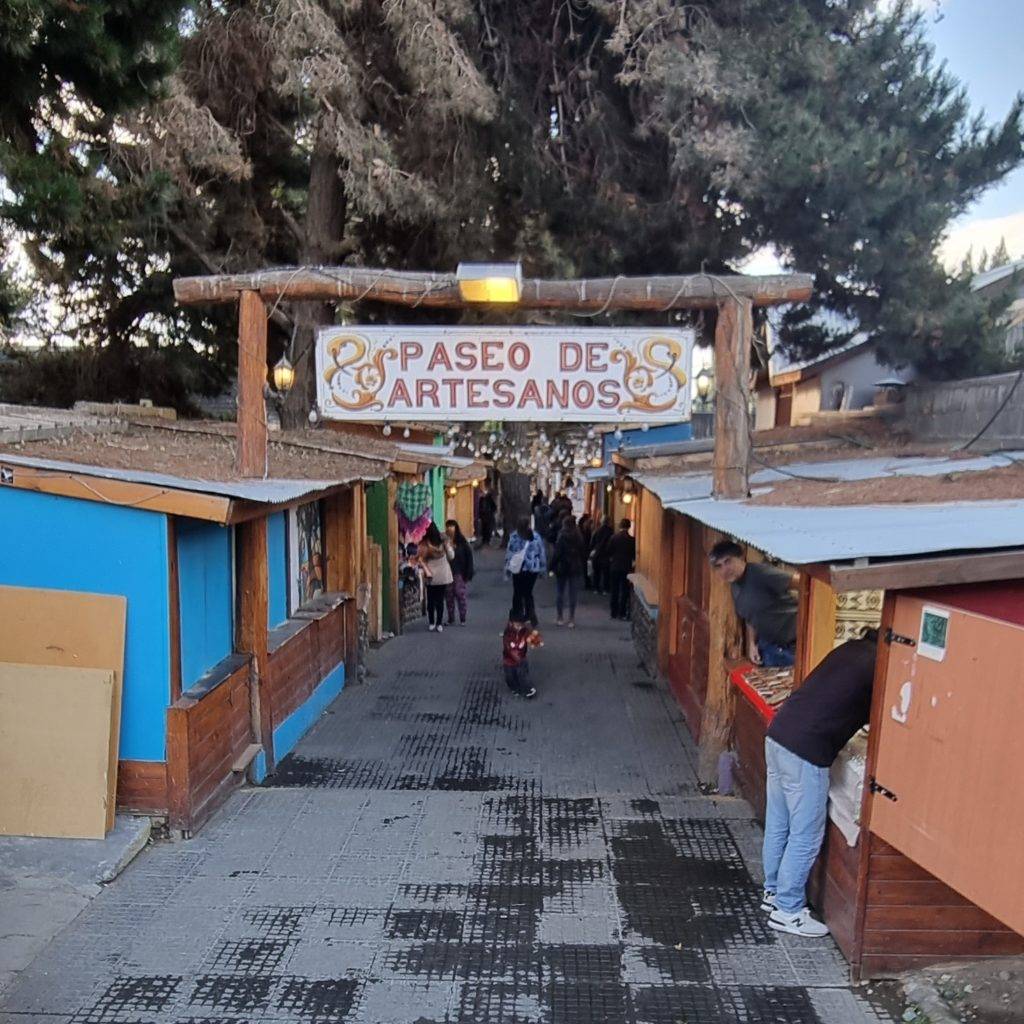
# 4 - Nimez Bird Sanctuary
Just a 10 minute walk from the main street to the lake you can find the Nimez Bird Sanctuary. For 1000 pesos you get a ticket. You can re-use this ticket the next day.
It was a funny and relaxing trip to go bird watching. Just like the old times I did with my granny. At the bird sanctuary you can see Flamingo’s in summertime. It was strange to see them in a place like this, so close to glaciers. But they live here in a glacier lake bay, where the water is shallow and warmed by the sun. In the winter/end of fall they leave
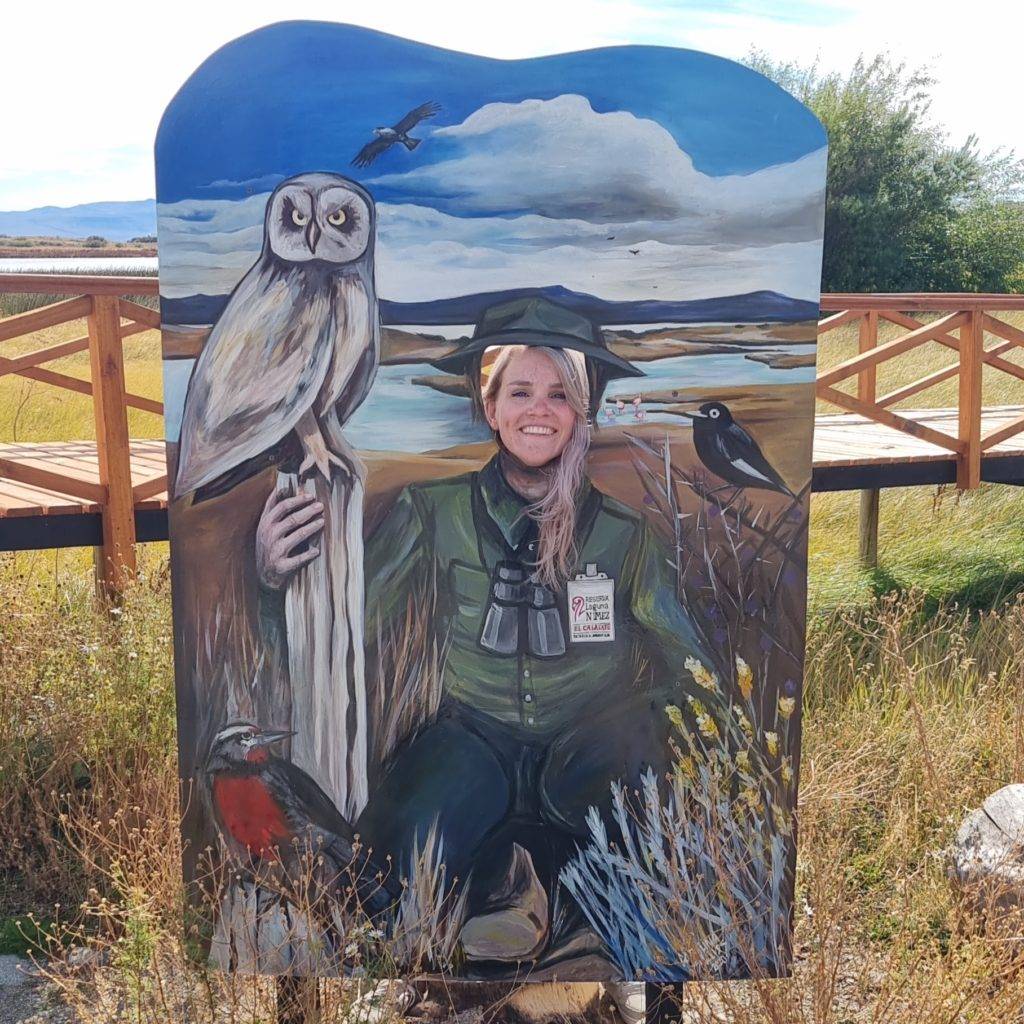
# 5 - Spa day at a hotel
I got the tip of a local friend to visit a 5 star hotel where you can do fitness, swim or go in the sauna for just 1900 pesos for 2 hours. The hotel is called Posada Los Alamos.
This Post Has One Comment
Mooi omschreven weer en wat leuk om je reis zo te kunnen volgen!
Geniet van ieder verhaal van je weer!